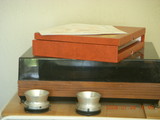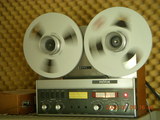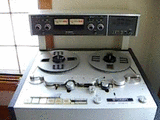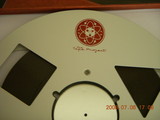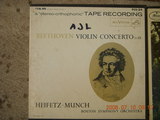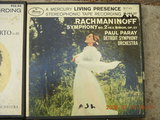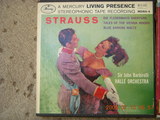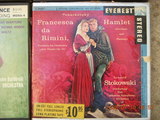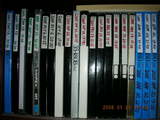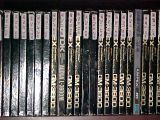|
The Tape Product
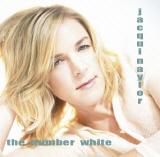 My first tape came last week
in a nice two-volume package
the way one would package Homer's Iliad and Odyssey
in a two-volume set.
There is an outer box with two tape boxes inside
made of nice material.
In each box is a metal reel
stamped with the album number and side (e.g. 001A and 001B)
about half full of quarter-inch tape.
My first tape came last week
in a nice two-volume package
the way one would package Homer's Iliad and Odyssey
in a two-volume set.
There is an outer box with two tape boxes inside
made of nice material.
In each box is a metal reel
stamped with the album number and side (e.g. 001A and 001B)
about half full of quarter-inch tape.
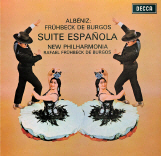 The tapes have translucent leader at both ends,
see-though enough to invoke the auto-stop feature on my ReVox A77,
so the tapes stop cleanly on rewind and play.
(I "reverse-brake" my deck on rewind and fast-forward
to spare my ReVox brakes any undue hardship.)
They're packaged "tail-out," rewind before play,
which is the storage direction I prefer.
I was taught that tapes are best stored after playback
rather than after rewind.
Think "REWIND BEFORE PLAY"
rather than "BE KIND, REWIND."
The tapes have translucent leader at both ends,
see-though enough to invoke the auto-stop feature on my ReVox A77,
so the tapes stop cleanly on rewind and play.
(I "reverse-brake" my deck on rewind and fast-forward
to spare my ReVox brakes any undue hardship.)
They're packaged "tail-out," rewind before play,
which is the storage direction I prefer.
I was taught that tapes are best stored after playback
rather than after rewind.
Think "REWIND BEFORE PLAY"
rather than "BE KIND, REWIND."
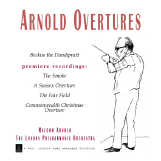 I know Sonny Rollins, Bill Evans, and David Oistrakh,
but Jacqui Naylor is a new voice in my collection.
The recording was close and crisp,
a good studio recording with
plenty of intimacy and only a little depth and air.
It's about what I would expect if I could get my dream copy
of Joni Mitchell's "Ladies of the Canyon" or
the Peter, Paul and Mary album "In the Wind."
Jacqui Naylor is not
Joan Baez or Joni Mitchell or Judy Collins
or Mary Travers or Jacqui McShee or Nana Mouskouri.
She isn't Diana Krall either.
Fine, she's Jacqui Naylor,
a rich, somewhat-older, flexible female voice
with good instrumentals and a nice breadth
of jazz and popular numbers.
I enjoyed the album and I recommend it.
I know Sonny Rollins, Bill Evans, and David Oistrakh,
but Jacqui Naylor is a new voice in my collection.
The recording was close and crisp,
a good studio recording with
plenty of intimacy and only a little depth and air.
It's about what I would expect if I could get my dream copy
of Joni Mitchell's "Ladies of the Canyon" or
the Peter, Paul and Mary album "In the Wind."
Jacqui Naylor is not
Joan Baez or Joni Mitchell or Judy Collins
or Mary Travers or Jacqui McShee or Nana Mouskouri.
She isn't Diana Krall either.
Fine, she's Jacqui Naylor,
a rich, somewhat-older, flexible female voice
with good instrumentals and a nice breadth
of jazz and popular numbers.
I enjoyed the album and I recommend it.
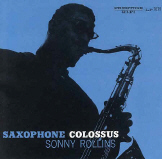 Like the first time we heard compact disk (CD) sound,
the silence is compelling.
My own master tapes are recorded in live-music settings,
so there is a continuous clutter of clatter in the background.
I don't get the truly quiet moments,
Peter Moncrief's "intertransient silence"
(a silly term from his International Audio Review).
On these tapes with their zillion-decibel signal-to-noise ratios
I hear nothing when there's supposed to be nothing.
Like the first time we heard compact disk (CD) sound,
the silence is compelling.
My own master tapes are recorded in live-music settings,
so there is a continuous clutter of clatter in the background.
I don't get the truly quiet moments,
Peter Moncrief's "intertransient silence"
(a silly term from his International Audio Review).
On these tapes with their zillion-decibel signal-to-noise ratios
I hear nothing when there's supposed to be nothing.
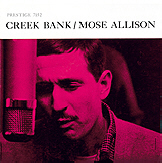 But silent background isn't the be-all-and-end-all of high-end sound.
That's what I hope we learned from digital sound media
before, during, and after the CD.
Jacqui's voice, the piano, the drums, the cymbals, have more content.
They're fuller, richer, and more complete on the tape.
It's exactly what a higher-end high-end medium is supposed to be.
(It's what I got when I bought that Sound Ideas tape in 1981, too.)
But silent background isn't the be-all-and-end-all of high-end sound.
That's what I hope we learned from digital sound media
before, during, and after the CD.
Jacqui's voice, the piano, the drums, the cymbals, have more content.
They're fuller, richer, and more complete on the tape.
It's exactly what a higher-end high-end medium is supposed to be.
(It's what I got when I bought that Sound Ideas tape in 1981, too.)
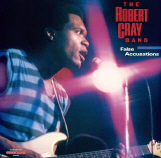 This tape is a joy to listen to.
There's more music there,
more voice, more piano, more drums, more cymbals,
more bass, just more of whatever makes music fun to hear.
I remember hifi shows where just about every room
was playing the new Amanda McBroom record on Sheffield,
the latest audiophile vinyl effort.
If I had to walk down hotel hallways
listening to one high-end hifi after another,
The Tape Project offerings would be a much better choice.
This tape is a joy to listen to.
There's more music there,
more voice, more piano, more drums, more cymbals,
more bass, just more of whatever makes music fun to hear.
I remember hifi shows where just about every room
was playing the new Amanda McBroom record on Sheffield,
the latest audiophile vinyl effort.
If I had to walk down hotel hallways
listening to one high-end hifi after another,
The Tape Project offerings would be a much better choice.
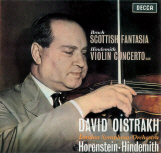 I look at my wall of eBay-purchased half-track,
19 cm/sec (7½ inches per second)
factory-duplicated tapes.
These are ancient relics of a bygone era,
really good-sounding relics,
the highest pinnacle commercial audio ever attained.
At their prices in their day,
owning these was the privilege of wealthy people.
If their continuing issues live up to this tape's standard,
I wouldn't mind being able to cover my walls
with offerings from The Tape Projects.
I look at my wall of eBay-purchased half-track,
19 cm/sec (7½ inches per second)
factory-duplicated tapes.
These are ancient relics of a bygone era,
really good-sounding relics,
the highest pinnacle commercial audio ever attained.
At their prices in their day,
owning these was the privilege of wealthy people.
If their continuing issues live up to this tape's standard,
I wouldn't mind being able to cover my walls
with offerings from The Tape Projects.
|
|
The Tape Medium
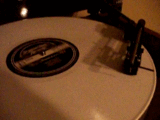 The audiophile community has embraced vinyl records
as its analogue music storage and playback medium of choice.
Compact disk (CD) is the mainstream medium
and there are higher-end digital alternatives
like high definition (HDCD) and digital video disk audio (DVD-A),
but some of us favor analogue when we sit down for serious listening.
The audiophile community has embraced vinyl records
as its analogue music storage and playback medium of choice.
Compact disk (CD) is the mainstream medium
and there are higher-end digital alternatives
like high definition (HDCD) and digital video disk audio (DVD-A),
but some of us favor analogue when we sit down for serious listening.
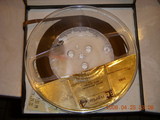 I'm certainly a supporter of vinyl.
I patented and manufactured
the LOCI tonearm
and I have about 4000 vinyl records in my personal collection.
Like many older audio junkies,
my allegiance to vinyl comes from inertia.
There were many media choices including
quarter-track tape,
vinyl long-play records,
45-RPM "doughnut" singles,
eight-track tape loops,
and compact cassettes.
Shellac 78-RPM records went away when long-play microgroove came
and half-track tapes gave way to quarter-track around 1960.
The medium of full-size cassettes never gained traction,
no loss in my opinion.
I'm certainly a supporter of vinyl.
I patented and manufactured
the LOCI tonearm
and I have about 4000 vinyl records in my personal collection.
Like many older audio junkies,
my allegiance to vinyl comes from inertia.
There were many media choices including
quarter-track tape,
vinyl long-play records,
45-RPM "doughnut" singles,
eight-track tape loops,
and compact cassettes.
Shellac 78-RPM records went away when long-play microgroove came
and half-track tapes gave way to quarter-track around 1960.
The medium of full-size cassettes never gained traction,
no loss in my opinion.
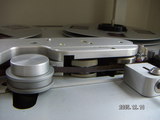 When the compact disk (CD) came along in 1982,
sold to us as "perfect sound forever,"
it was
important
to get the other media,
the analogue media out of circulation.
I believe it was important to those introducing the CD medium
to make sure there was little or nothing to compare it to.
The result was a mainstream music industry
that doesn't make anything else,
no vinyl records, no reel-to-reel tapes, and no compact cassettes.
When the compact disk (CD) came along in 1982,
sold to us as "perfect sound forever,"
it was
important
to get the other media,
the analogue media out of circulation.
I believe it was important to those introducing the CD medium
to make sure there was little or nothing to compare it to.
The result was a mainstream music industry
that doesn't make anything else,
no vinyl records, no reel-to-reel tapes, and no compact cassettes.
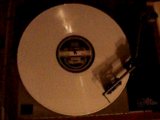 I believe the high-end audio community made a mistake
making vinyl its medium of choice
without also including open-reel tape.
If we're going to keep analogue sound in our hifis,
then we have to resurrect some older technology,
something outside the mainstream.
As a music collector, vinyl was the obvious choice for a collection,
records were easy to make and cheap to buy.
Around 1995 I decided to expand my horizons to factory tapes.
I have a nice hifi, why not have the nicest medium to play on it?
I believe the high-end audio community made a mistake
making vinyl its medium of choice
without also including open-reel tape.
If we're going to keep analogue sound in our hifis,
then we have to resurrect some older technology,
something outside the mainstream.
As a music collector, vinyl was the obvious choice for a collection,
records were easy to make and cheap to buy.
Around 1995 I decided to expand my horizons to factory tapes.
I have a nice hifi, why not have the nicest medium to play on it?
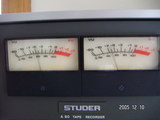 In my educated and immodest opinion,
the right decision for a high-end audio community
is to maintain the highest-end medium of tape.
The Tape Project is taking us in that direction,
good for them.
In my educated and immodest opinion,
the right decision for a high-end audio community
is to maintain the highest-end medium of tape.
The Tape Project is taking us in that direction,
good for them.
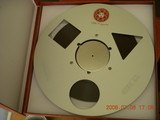 So why only vinyl?
I believe the current trend in audio is
rettero
is
bettero.
That explains the almost-total commitment to vinyl over tape,
enough to let the tape industry die.
It also explains the commitment to vacuum-tube amplifiers
when the 1980 solid-state products were far superior
to the best tube amplifiers, from then to now.
Comparing the ultra-expensive, single-ended, triode amplifiers
to the old Dynakit Stereo-70
is flattering only to the old Dyna,
but the
retro-addicts
keep buying them.
So why only vinyl?
I believe the current trend in audio is
rettero
is
bettero.
That explains the almost-total commitment to vinyl over tape,
enough to let the tape industry die.
It also explains the commitment to vacuum-tube amplifiers
when the 1980 solid-state products were far superior
to the best tube amplifiers, from then to now.
Comparing the ultra-expensive, single-ended, triode amplifiers
to the old Dynakit Stereo-70
is flattering only to the old Dyna,
but the
retro-addicts
keep buying them.
If we're lucky,
then The Tape Project will continue
to produce product this good in this good medium.
If we're luckier,
then they will create audiophile interest in the forgotten tape medium.
(2013 December 9:
they have continued to impress me with their product's quality.)
|
